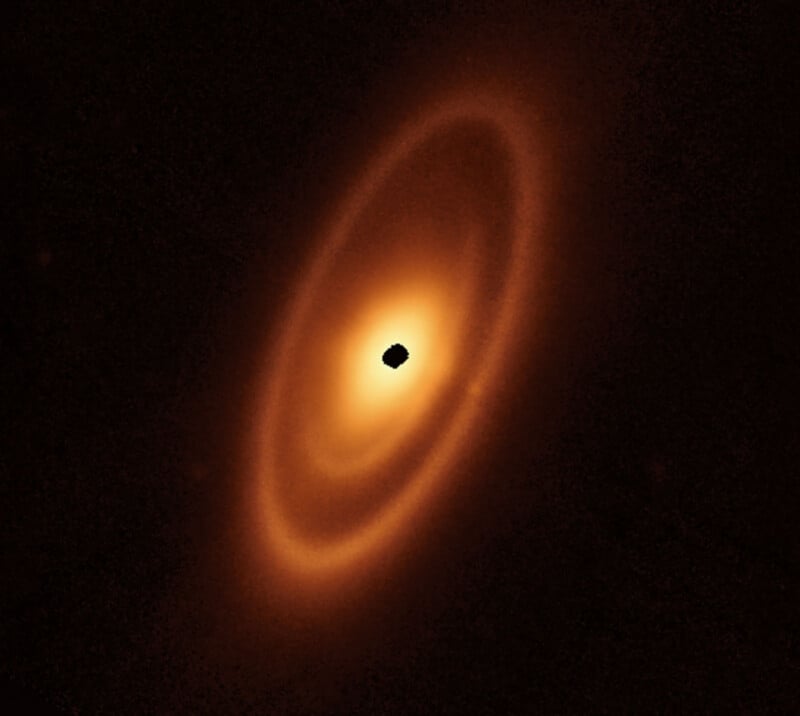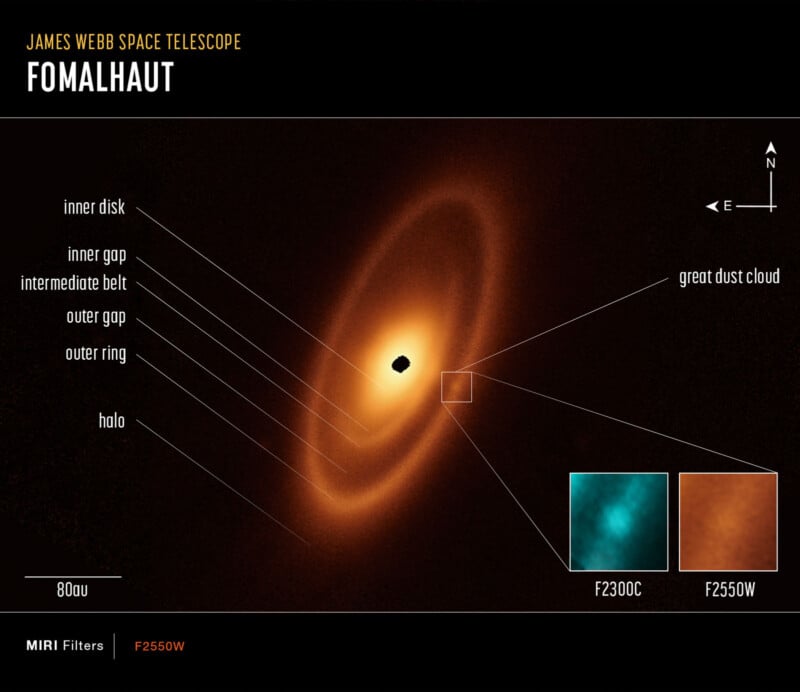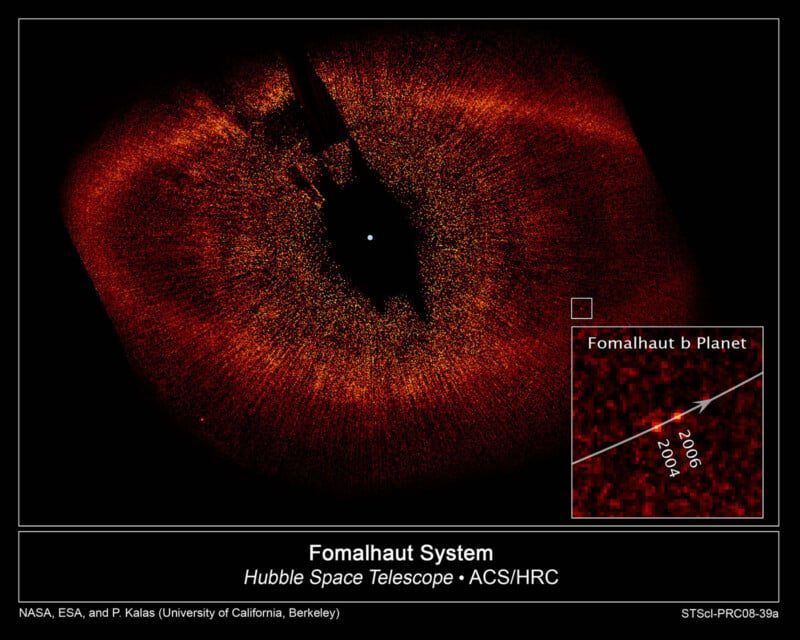Webb Snaps First Photo of Asteroid Belt Outside the Solar System

The James Webb Space Telescope has achieved another milestone by capturing an image of the first asteroid belt ever seen outside the Solar System.
Astronomers used Webb to capture an image of the dust surrounding a relatively close star, Fomalhaut, and to study the first asteroid belt seen outside the Solar System. However, to their surprise, scientists found more than they expected, including structures more complex than the asteroid and Kuiper dust belts in the Solar System.
“Overall, there are three nested belts extending out to 23 billion kilometers (14.3 billion miles) — that’s 150 times the distance of the Earth from the Sun. The scale of the outermost belt is roughly twice the scale of our Solar System’s Kuiper Belt of small bodies and cold dust beyond Neptune. The inner belts — which had never been seen before — were revealed by Webb for the first time,” the European Space Agency (ESA) explains.
Engadget writes, “Since 1983, astronomers have known the 440 million-year-old Fomalhaut is surrounded by dust and debris, but what they didn’t expect to find was three different debris fields surrounding the star.”
The newly imaged belts encircle Fomalhaut, the brightest star in the southern constellation Piscis Austrinus. The accompanying research has been published in Nature Astronomy.
The lead researcher, András Gáspár of the University of Arizona in Tuscon, says, “I would describe Fomalhaut as the archetype of debris discs found elsewhere in our galaxy, because it has components similar to those we have in our own planetary system. By looking at the patterns in these rings, we can actually start to make a little sketch of what a planetary system ought to look like — if we could actually take a deep enough picture to see the suspected planets.”

The outermost belt has been photographed before by the Hubble Space Telescope and ESA’s Herschel Space Observatory, as well as the Atacama Large Millimeter-submillimeter Array (ALMA) in Chile. However, none of these observations showed a structure interior to the outermost belt.
Webb discovered the inner belts using its infrared instruments, including the Mid-Infrared Instrument (MIRI). “Where Webb really excels is that we’re able to physically resolve the thermal glow from dust in those inner regions. So you can see inner belts that we could never see before,” says Schuyler Wolff, another member of the team at the University of Arizona.
That isn’t to say that Hubble and ALMA haven’t been useful. “With Hubble and ALMA, we were able to image a bunch of Kuiper Belt analogs, and we’ve learned loads about how outer discs form and evolve. But we need Webb to allow us to image a dozen or so asteroid belts elsewhere. We can learn just as much about the inner warm regions of these discs as Hubble and ALMA taught us about the colder outer regions,” Wolff explains.
The belts surrounding Fomalhaut are “most likely shaped by the gravitational forces produced by unseen planets,” ESA explains.
“The belts around Fomalhaut are kind of a mystery novel: Where are the planets?” asks George Rieke, another team member and the US science lead for Webb’s MIRI.
“I think it’s not a very big leap to say there’s probably a really interesting planetary system around the star,” Rieke adds.
“We definitely didn’t expect the more complex structure with the second intermediate belt and then the broader asteroid belt. That structure is very exciting because any time an astronomer sees a gap and rings in a disc, they say, ‘There could be an embedded planet shaping the rings!'” Wolff adds.
One of the unexpected asteroid belts surrounding Fomalhaut is “tilted at a jaunty 23 degrees from everything else seen in orbit around the star,” explains Science News.
“This is a truly unique aspect of the system,” Gáspár tells Science News. The tilt could be a result of undiscovered planets surrounding Fomalhaut.

Fomalhaut was once believed to be host to one of the first planets ever photographed outside the Solar System, Dagon. However, since that discovery in 2008, Dagon’s existence has been called into question.
The new Webb image actually adds more evidence suggesting Dagon isn’t a planet but is just a cloud of dust. “It is fading, and it is expanding in size,” Gáspár says, explaining that Dagon’s trajectory and characteristics indicate dust clouds.
“This single observation of Fomalhaut revealed way too many aspects of the system that we need to understand and unpack. We set out to spatially resolve the asteroid belt component but ended up opening a much greater box of surprises,” Gáspár says.